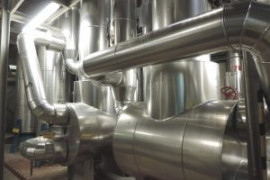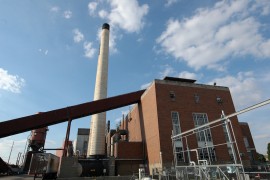
In Europe, storing thermal energy consists mainly of heating and cooling buildings, which represent, according to the Institute IFP Energies Nouvelles, nearly 50% of energy consumption. This is a major issue in the industry: how to keep energy production is often intermittent, and whose consumption varies seasonally and location? DHC News for you an update on the technologies used!
Sensible heat storage
This type of storage, especially regarding seasonal storage tanks, began to spread in Europe. It has the advantage to have a large capacity. The thermal energy is stored in the form of a temperature rise of the storage material. In fact, the amount of stored energy is directly proportional to the volume, the temperature rise and the thermal capacity of the storage material. Sensible heat storage can be achieved:
In underground tanks:
in natural aquifers – called the ATES (Aquifer Thermal Energy Storage). There are several, such as Neubrandenburger Stadtwerke Germany. Commissioned in 2004 and implementing a storage capacity of 4 MW at a temperature between 60 and 80 ° C, it is linked to a gas and steam power plant. It is located in an aquifer at a depth of 1200-1300 meters.
in rocks or underground – such storage is called UTES (Underground Thermal Energy Storage) or BTES (Borehole Thermal Energy Storage). This type of storage is used especially in Northern Europe and Canada, like the Drake Landing Solar Community in Alberta. This winter supplies more than 50 houses with solar heat stored during the summer.
In surface vessels, more or less buried.
The latent heat storage
In this case, the thermal energy is stored as a state change – usually solid / liquid – the storage material. How does it work? phase change materials are encapsulated in a storage tank. This will store energy at night for example, then the return during the day. This technology also works with the cold: this is why many consider it a promising technique for the sector.
For now, there are no storage facilities by latent heat capacity. However, many projects are underway, including the United States: for example the project Metallic Composites Phase-Change Materials for High-Temperature Thermal Energy Storage, which led the MIT on molten nanomaterials.
Thermochemical storage
This is a technique of more experimental thermal storage. The process is more complex for the latent and sensible heat: separation of products in storage, contacting the reactants to restitution, possible phase changes during cycling … This storage can both relate to heating and air conditioner.
In France, it is particularly tested by the ANR Prossis, based on inter-seasonal storage method using the properties of hydration / dehydration of the lithium bromide, to the crystallization. This technique is already available in Sweden, for example by ClimateWell company providing commercial air conditioning system / three phase adsorption storage.
All types of thermal energy storage can be further improved, as evidenced by the various experiments conducted across Europe and the world. Not to forget anything timeliness of heat networks and storage of the thermal energy, subscribe to our newsletter.







